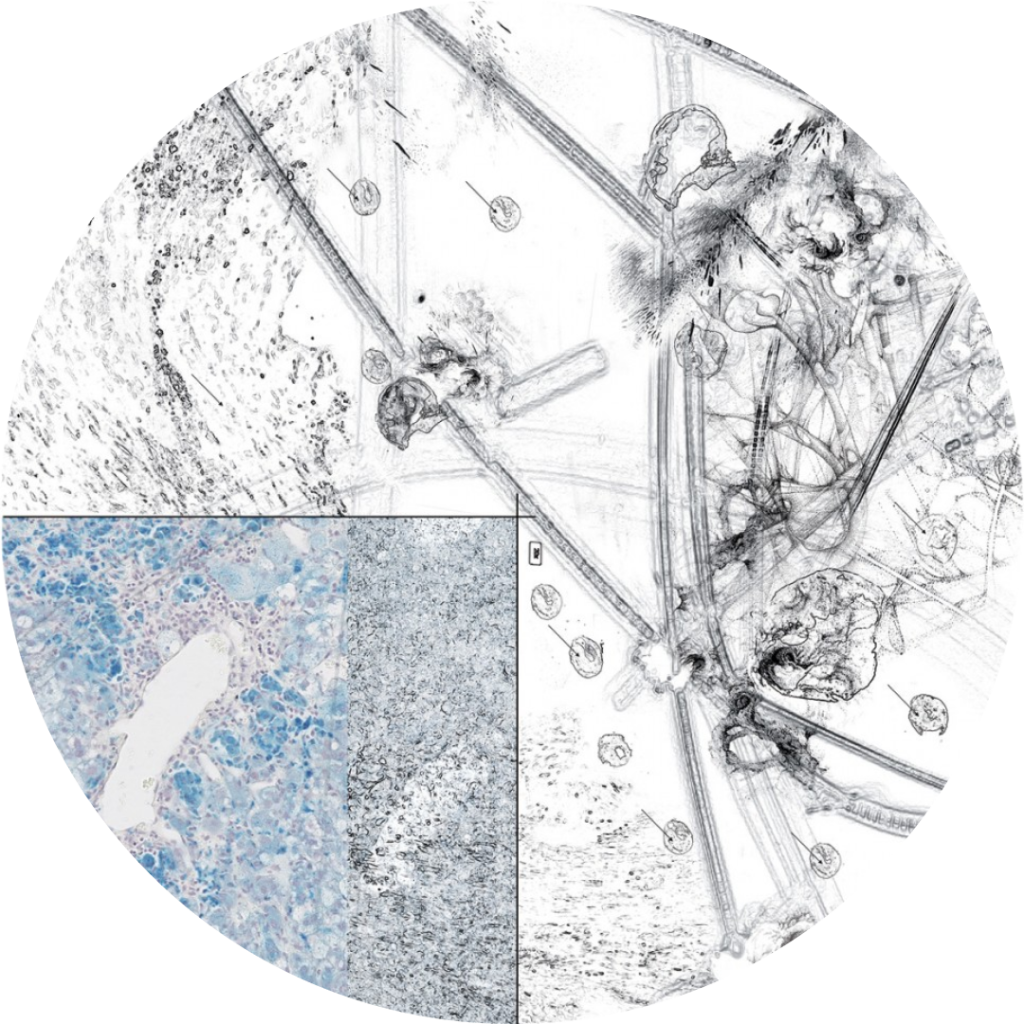



The team is based on the complementary expertise contributed by a group (Jean-Sébastien Silvestre) experienced in deciphering the signaling pathways involved in post-ischemic tissue remodeling, a group (Jean-Sébastien Hulot) with an internationally recognized expertise in understanding the molecular and cellular mechanisms involved in cardiac muscle repair during heart failure; and a group (Philippe Menasché) with a long–standing experience in the preclinical, translational and clinical aspects of stem cell research.
The team therefore constitutes an ideal platform of expertise and technical know-how, extending from the basic features of cardiac injury, cardiomyocyte regeneration and contractility as well as tissue remodeling and stiffness to the clinical applications of regenerative and reparative therapies for patients with cardiac diseases, including heart failure.
Namely, our current objectives are :
– To understand the contribution of immune cells in the development of different forms of heart failure
– To describe the cascade of molecular and cellular events leading to a stiffer heart
– To develop and test innovative therapeutic approaches to promote regeneration and repair of the heart
Currently, the team has three major scientific aims: a) deciphering the mechanisms of cardiac repair, b) deciphering the mechanisms leading to the stiffening of cardiac muscle and c) developing innovative therapies comprising cell and non-cell-based approaches for patients with cardiac diseases. We have a specific interest in cardioimmunology and cardiometabolism. In particular, we have:
i) decrypted the importance of the interaction between different cellular components of innate and adaptive immunity and cardiac homeostasis including cardiac regeneration and remodeling (Loyer X et al, Circ Res, 2018; Zlatanova I et al, Circulation, 2019; Santos-Zas I et al, Nat Commun, 2021; Gomez I et al, Int J Mol Sci, 2022; Sun Y et al, J Am Coll Cardiol, 2022).
ii) demonstrated that activation of cardiac stromal cells promote a pro-fibrotic program and thus identified novel therapeutic targets and biomarkers related to the fibrotic remodeling of the heart (Bouvet M et al., Sci Rep 2020, Sayed A. Sci Rep 2022, Masurkar N et al, Circulation 2023, Delacroix C et al. BioXriv 2022). We have developed innovative in vitro assays based on human iPSC-derived cardiomyocytes in order to better characterize some key functions (i.e. relaxation phase) that are best observed in the human heart and poorly recapitulated in animals. These platforms helped us to identify novel mechanisms and miRNA modulating the mechano-sensing machinery of cardiomyocytes (Vermersch E el al. JCI Insight, 2024; Seguret M et al., eLife 2024). These innovative tools open new avenues to explore cardiomyocytes as seen in humans and has generated multiple international interactions (with success to a ANR/DKG grant in 2022). Last, the team has developed novel imaging tools to assess large and small arteries stiffness, as well as cardiac tissue stiffness in humans (PACIFIC research project ongoing).
iii) developed cellular and acellular-based therapeutic approaches for patients with cardiac diseases. After the successful completion of our phase I trial testing cardiac progenitors derived from human embryonic stem cells embedded in a patch (Menasché P et al, J Am Coll Cardiol, 2018), the recognition of the predominant role of paracrine signaling has led to shift towards an a-cellular therapy based on the exclusive use of the secretome (of the same pluripotent stem cell cardiac derivatives) to further streamlining the clinical translatability of this myocardial repair strategy (El Harane N et al, Eur Heart J, 2018; Lima Correa B et al, Cardiovasc Res, 2021; Lima Correa B et al, Theranostics 2021; Pezzana C et al, Biomaterials, 2022).
The current strategic research axes of the team are :
Axis #1: The understanding of the molecular and cellular mechanisms involved in the inter and intra-organ pathogenic dialogue in cardiac diseases. We speculate that cardiac resident macrophages (CRM) establishing time-dependent residence in the perivascular niche acquire unchallenged reparative function in the cardiac tissue. We will characterize the perivascular identity of CRM in the cardiac tissue and unravel the environmental cues involved in this niche-dependent functional programming. We also hypothesize that efferocytosis favors the activation of the regulated secretion pathways allowing CRM to immediately adjust their phenotype and cytokine secretion to promote inflammation resolution and initiate reparative processes (Project funded by ANR-22-CE14-0008; ANR-21-CE14-0073-01). Furthermore, we speculate that extracellular vesicles (EVs) are decisive components of the common body language as EVs may employ an apoptotic mimicry strategy to subjugate CRM efferocytic function, playing a fundamental role in CRM-based organ quorum sensing
Axis #2: The understanding of the molecular and cellular mechanisms leading to myocardial stiffness. An increased stiffening of the myocardium has been constantly reported in patients with heart failure, suggesting that approaches to limit this progressive remodeling can improve cardiac performance and limit the transition to heart failure after myocardial injury. We will especially focus on two key processes involved in myocardial stiffness that are 1/ the abnormal remodeling of the extra-cellular matrix (i.e. increased fibrosis), (Project funded by eRa4Health Cardinnov ID-Preserved) and 2/ changes in the internal mechano-energetic properties of cardiac myocytes (i.e. increased resistance to stretch amd metabolic deficiency) (Project funded by ANR-22-CE14-0025; ANR-22-CE94-0034).
Axis #3: The development of innovative therapeutic modalities for cardiac diseases including regenerative and gene editing therapies. We have developed models of cardiac regeneration in mice (Zlatanova I et al, Circulation, 2019; Lima-Correa B et al, Theranostics, 2021) and obtained a grant from the European Union on this theme, whose European coordinator is P. Menasché (REGeRNA, Horizon-RIA 101057318, 2022). We have therefore framed a project aimed at developing a synthetic mRNA able to trigger a time-controlled induction of endogenous (quiescent) cardiomyocyte proliferation in the context of heart failure with loss of contractile function.
Following our prior involvement in the development of gene therapies for heart failure (Hulot JS et al. Eur J Heart Fail 2017), we are developing a novel CRISPR/Cas9-based gene editing therapy for LMNA cardiomyopathy (Project funded ANR19-CE17-0013-02). We have designed, tested and developed a genome editing correction package on iPSCells from patients carrying the LMNA pH222P (associated with the Emery Dreyfuss myopathy dystrophy, a highly debilitating monogenic disease with severe cardiomyopathy at age 20).